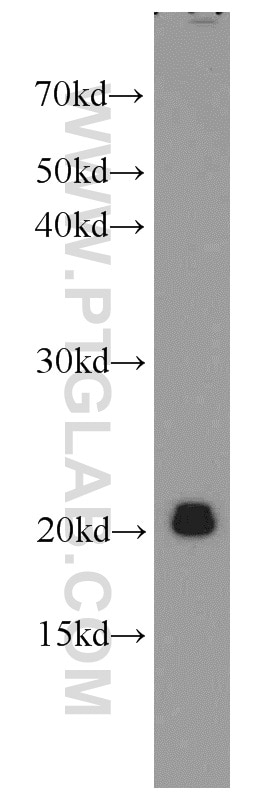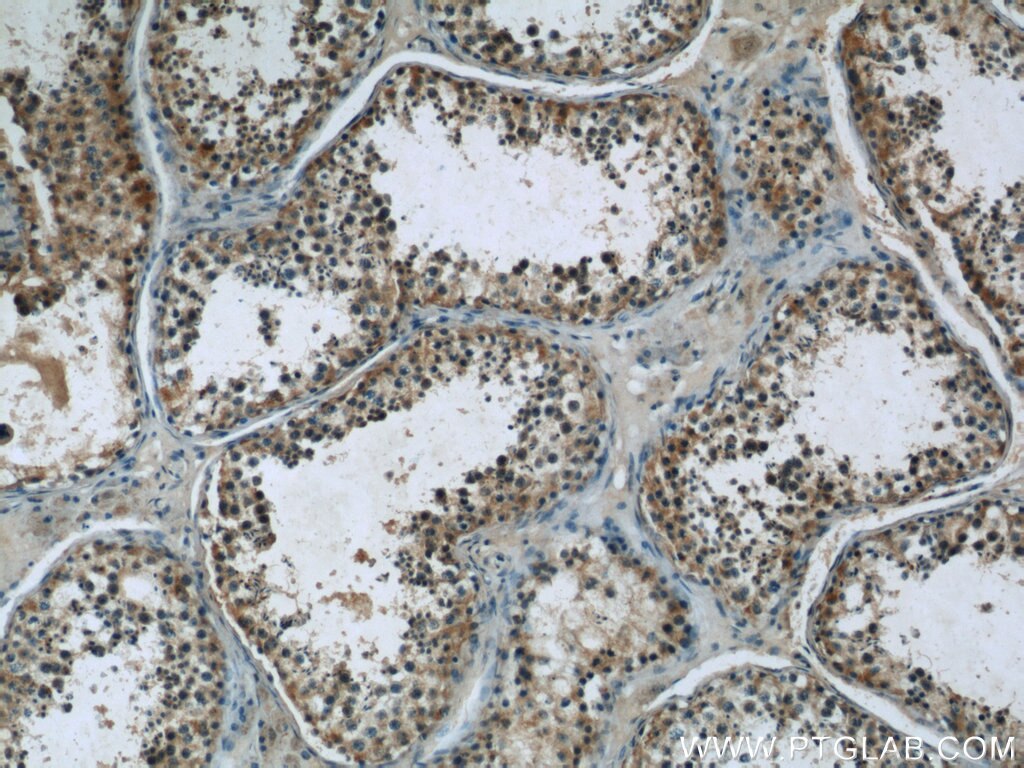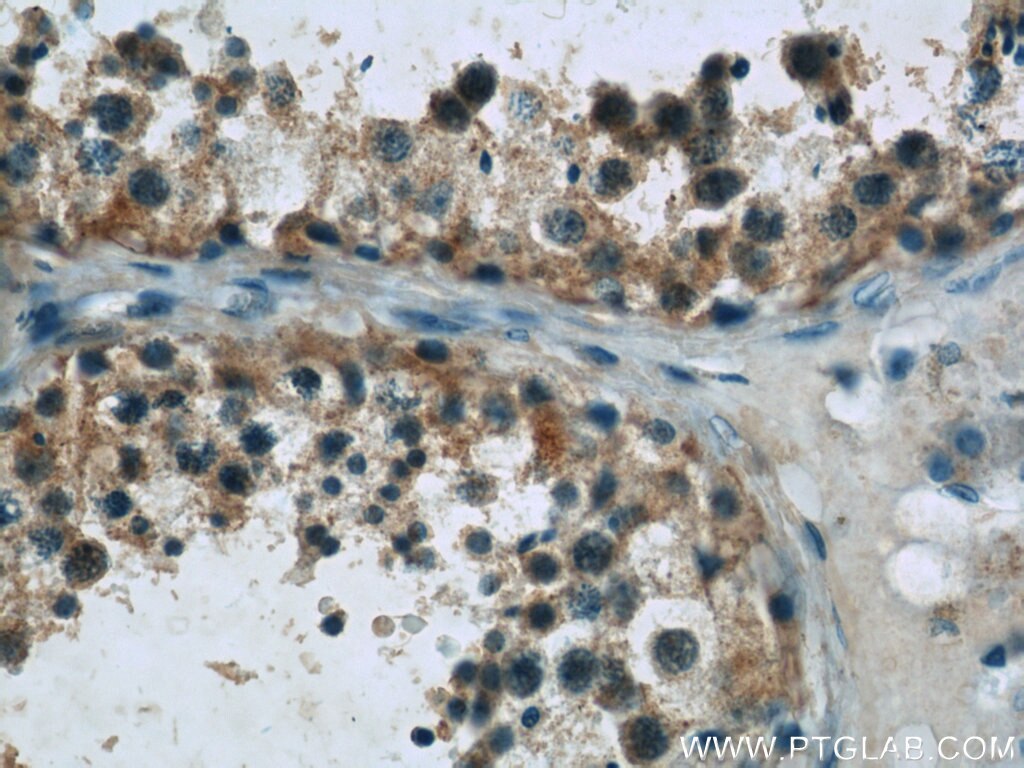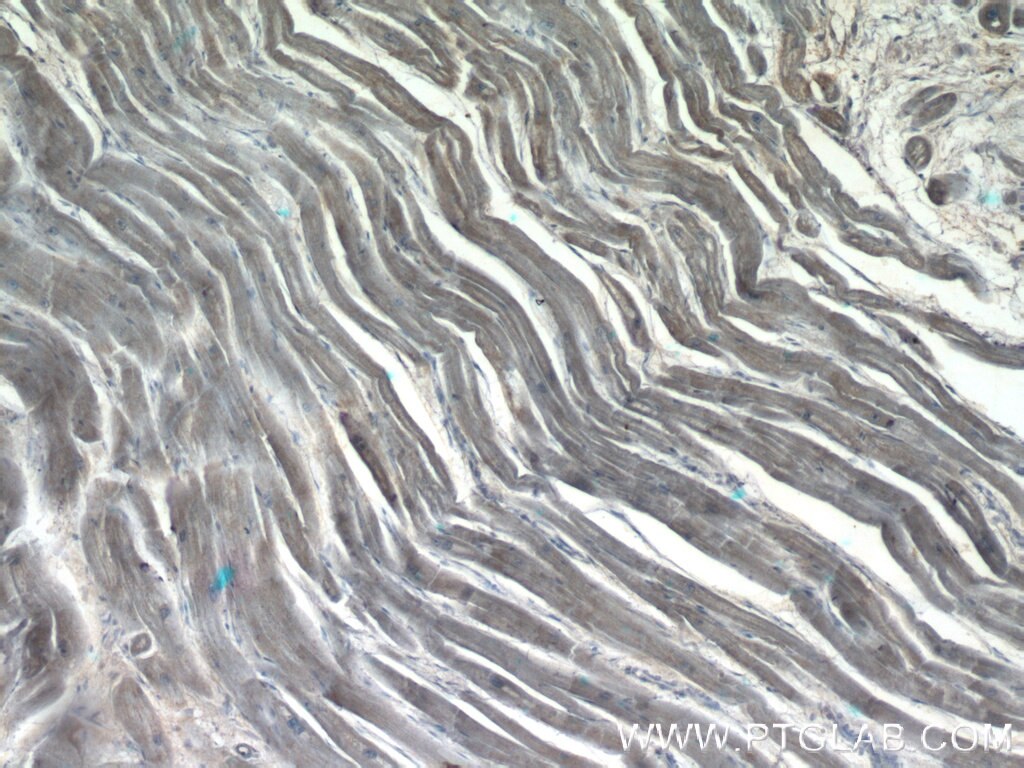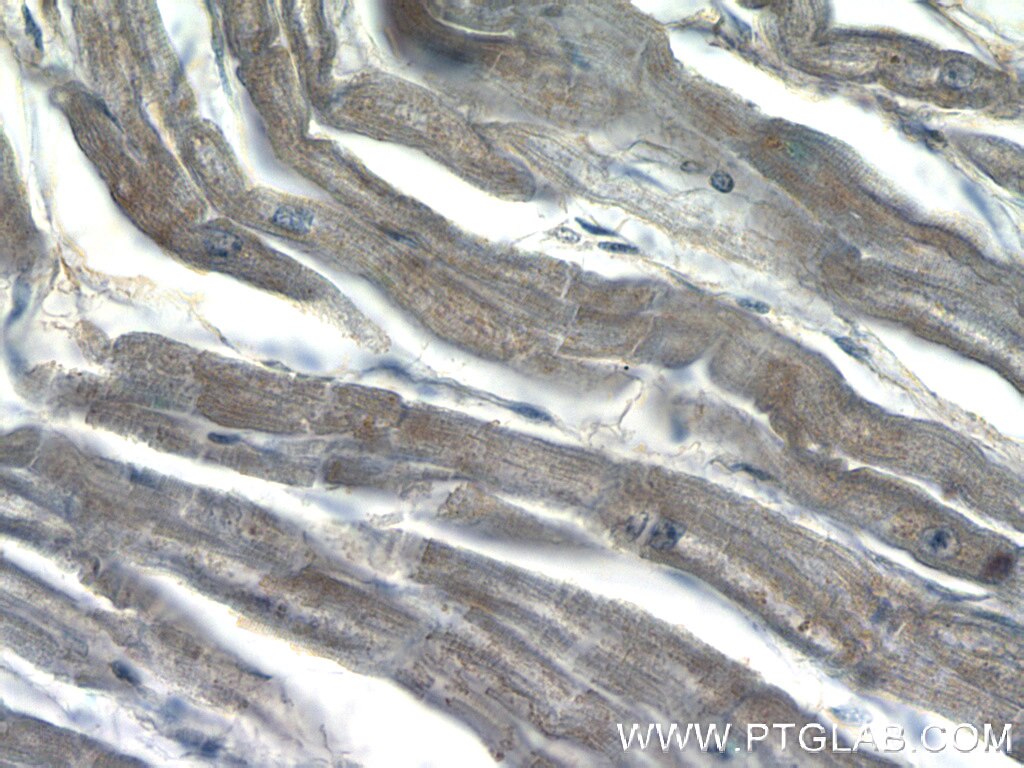Validation Data Gallery
Tested Applications
| Positive WB detected in | human heart tissue |
| Positive IHC detected in | human testis tissue, human heart tissue Note: suggested antigen retrieval with TE buffer pH 9.0; (*) Alternatively, antigen retrieval may be performed with citrate buffer pH 6.0 |
Recommended dilution
| Application | Dilution |
|---|---|
| Western Blot (WB) | WB : 1:200-1:1000 |
| Immunohistochemistry (IHC) | IHC : 1:20-1:200 |
| It is recommended that this reagent should be titrated in each testing system to obtain optimal results. | |
| Sample-dependent, Check data in validation data gallery. | |
Product Information
22137-1-AP targets DAND5 in WB, IHC, ELISA applications and shows reactivity with human samples.
| Tested Reactivity | human |
| Host / Isotype | Rabbit / IgG |
| Class | Polyclonal |
| Type | Antibody |
| Immunogen |
CatNo: Ag17533 Product name: Recombinant human DAND5 protein Source: e coli.-derived, PGEX-4T Tag: GST Domain: 1-189 aa of BC113476 Sequence: MLLGQLSTLLCLLSGALPTGSGRPEPQSPRPQSWAAANQTWALGPGALPPLVPASALGSWKAFLGLQKARQLGMGRLQRGQDEVAAVTLPLNPQEVIQGMCKAVPFVQVFSRPGCSAIRLRNHLCFGHCSSLYIPGSDPTPLVLCNSCMPARKRWAPVVLWCLTGSSASRRRVKISTMLIEGCHCSPKA 相同性解析による交差性が予測される生物種 |
| Full Name | DAN domain family, member 5 |
| Calculated molecular weight | 189 aa, 20 kDa |
| Observed molecular weight | 20 kDa |
| GenBank accession number | BC113476 |
| Gene Symbol | DAND5 |
| Gene ID (NCBI) | 199699 |
| RRID | AB_2879004 |
| Conjugate | Unconjugated |
| Form | |
| Form | Liquid |
| Purification Method | Antigen affinity purification |
| UNIPROT ID | Q8N907 |
| Storage Buffer | PBS with 0.02% sodium azide and 50% glycerol{{ptg:BufferTemp}}7.3 |
| Storage Conditions | Store at -20°C. Stable for one year after shipment. Aliquoting is unnecessary for -20oC storage. |
Protocols
| Product Specific Protocols | |
|---|---|
| IHC protocol for DAND5 antibody 22137-1-AP | Download protocol |
| WB protocol for DAND5 antibody 22137-1-AP | Download protocol |
| Standard Protocols | |
|---|---|
| Click here to view our Standard Protocols |

